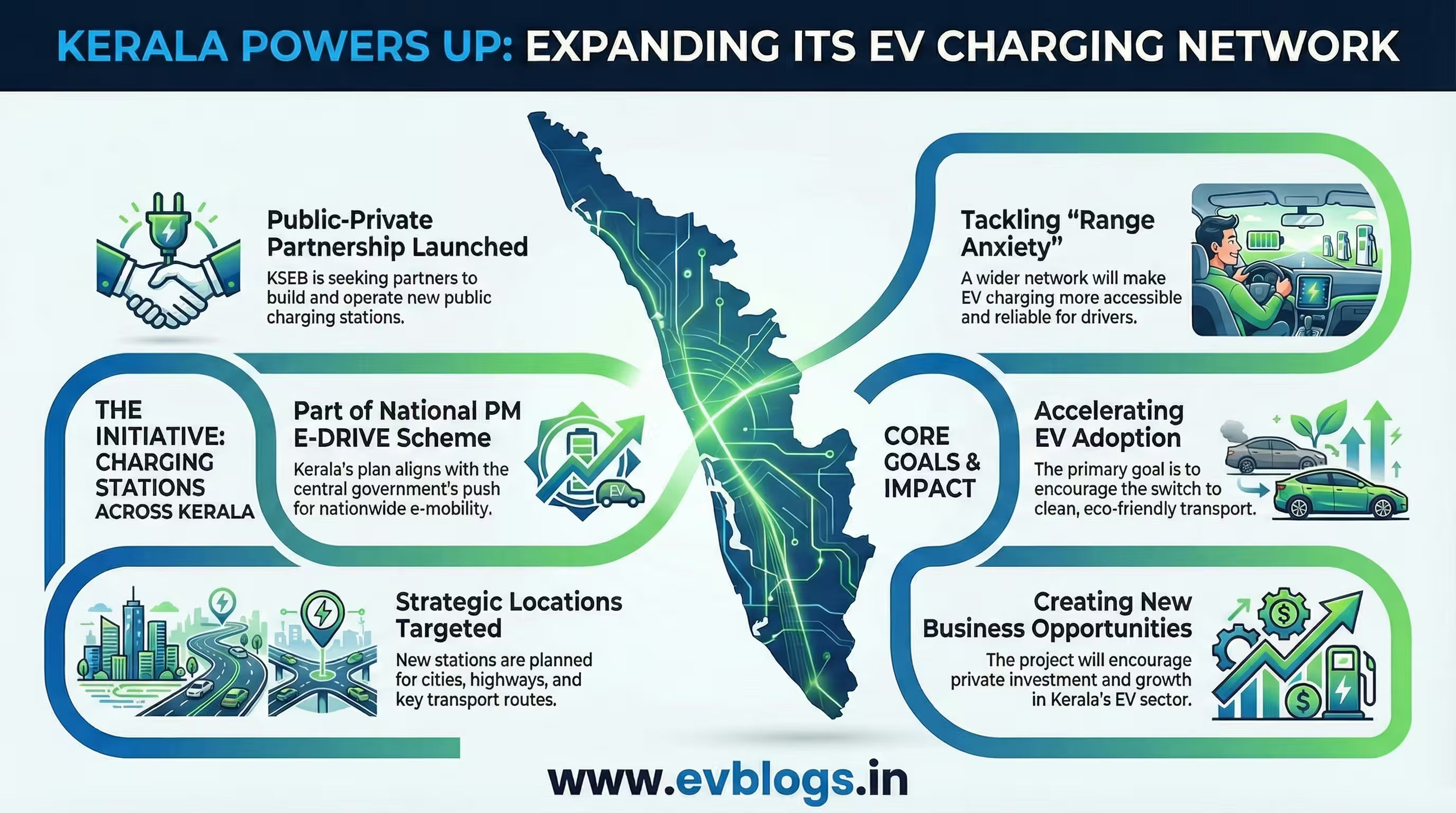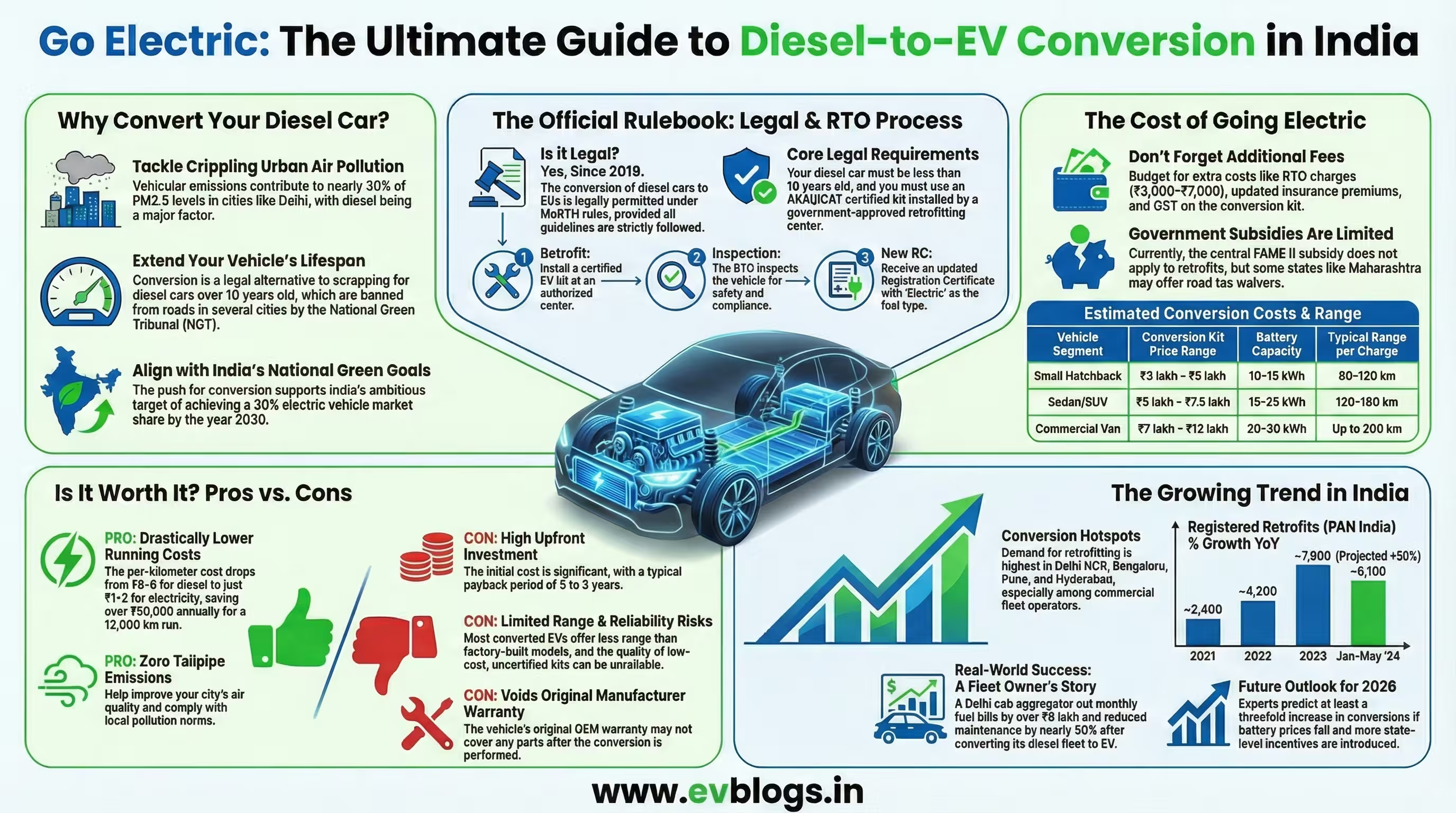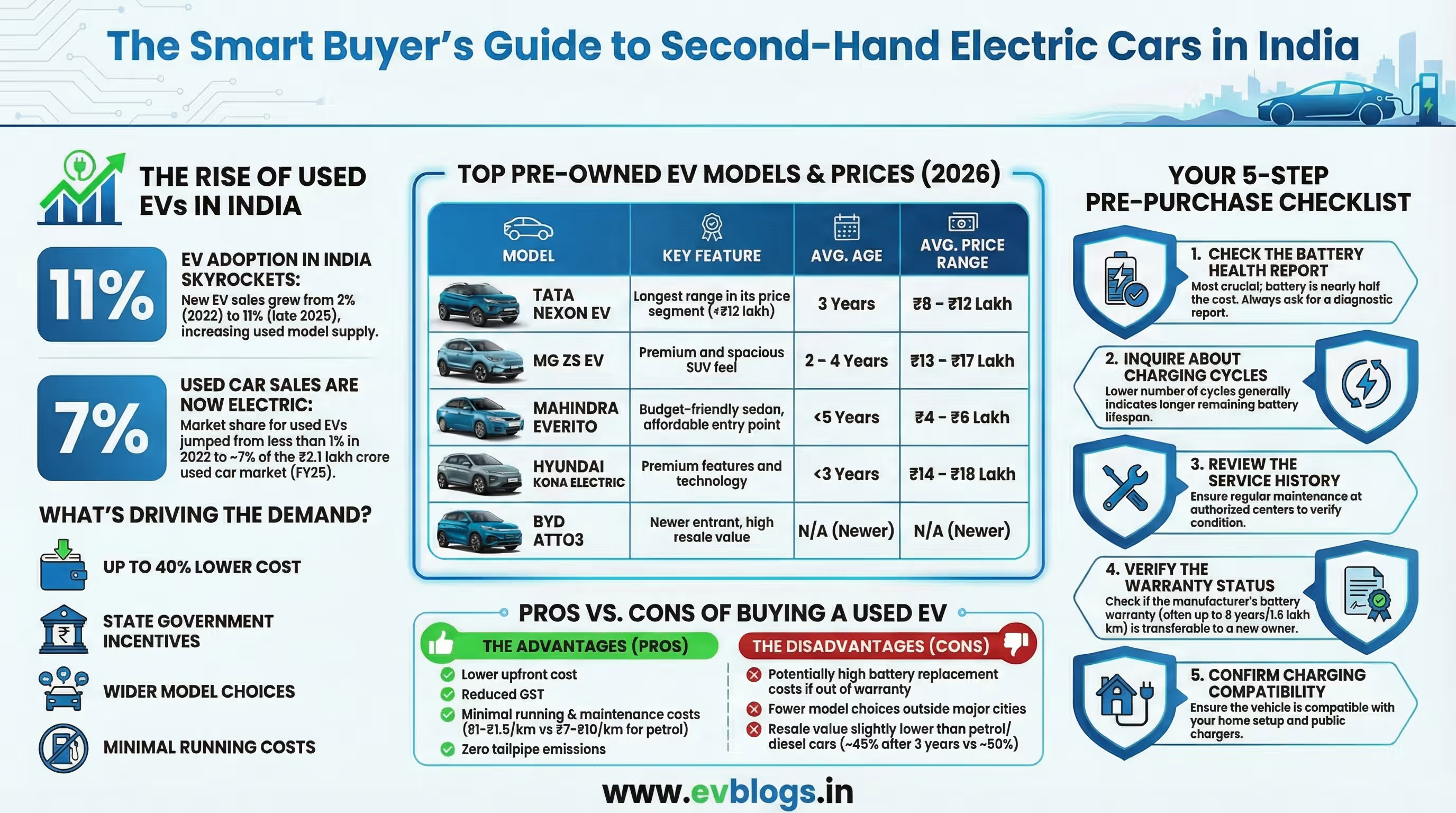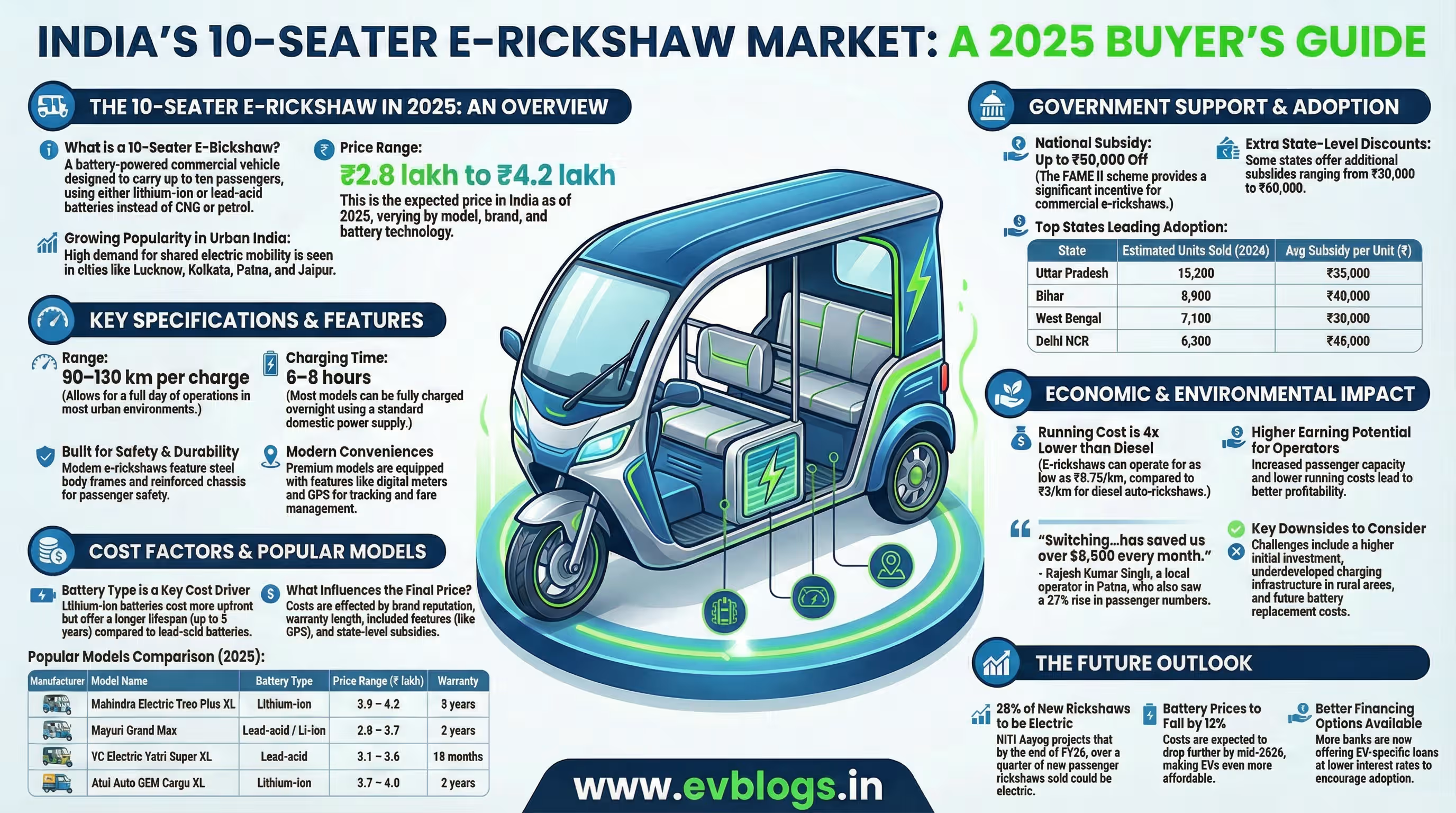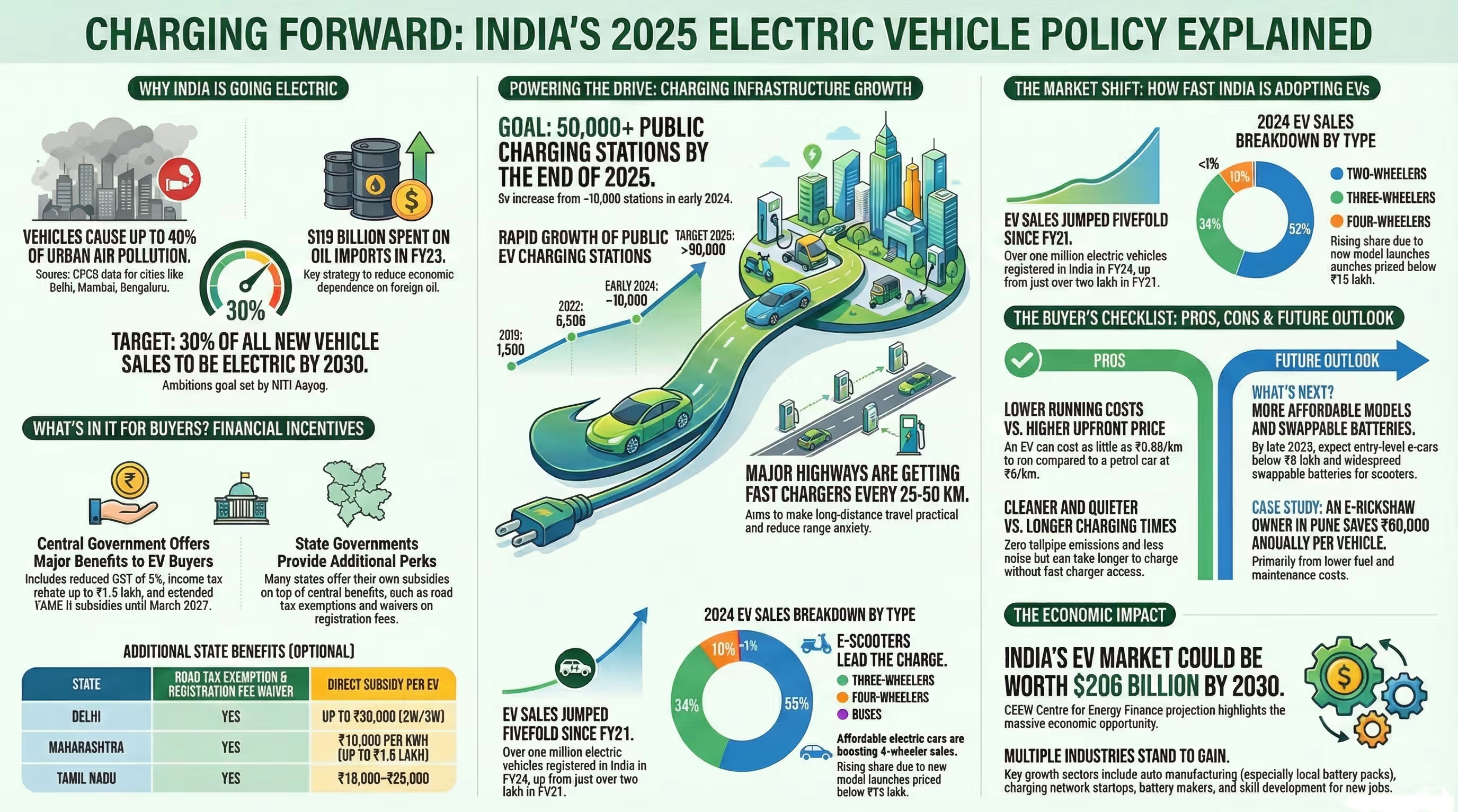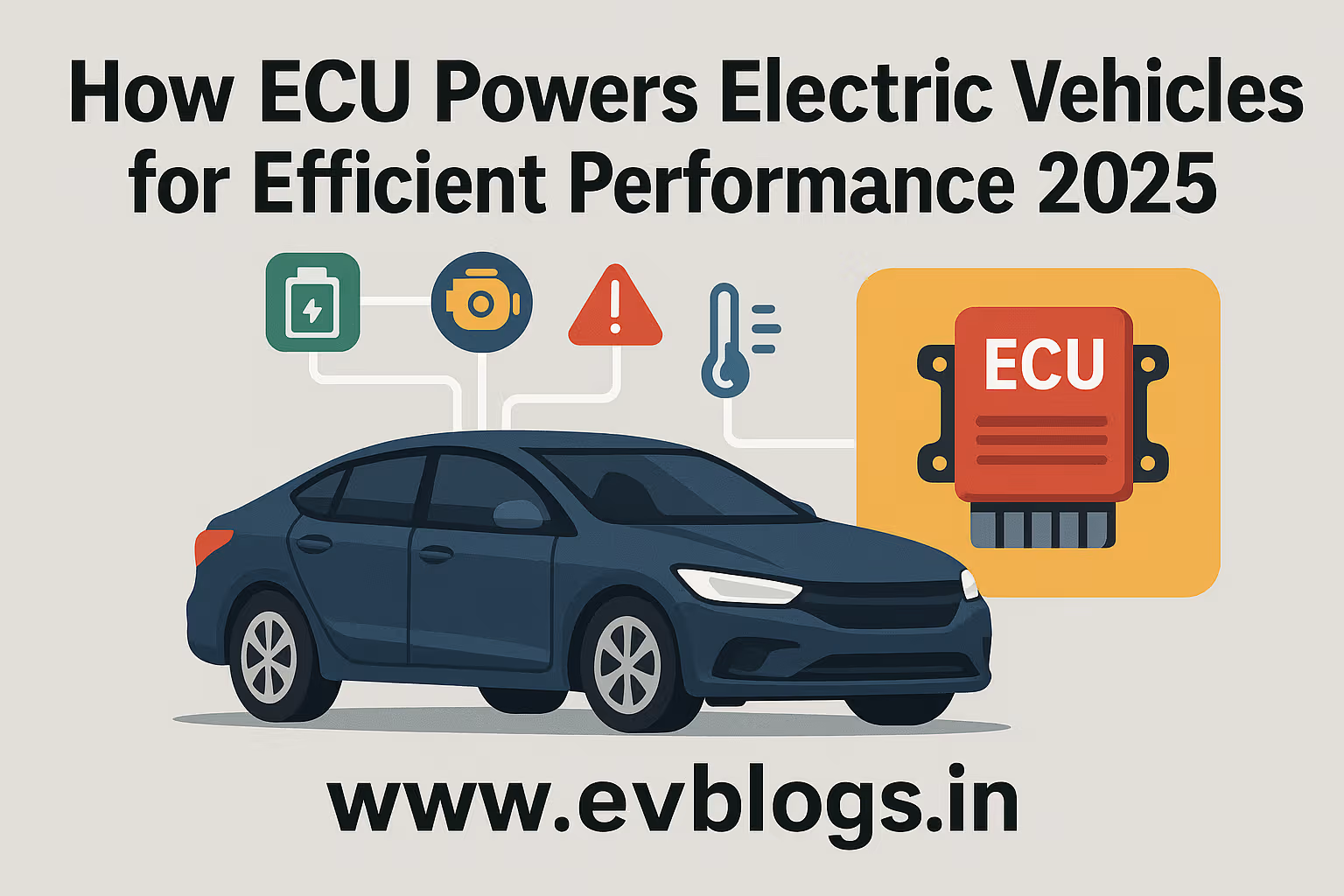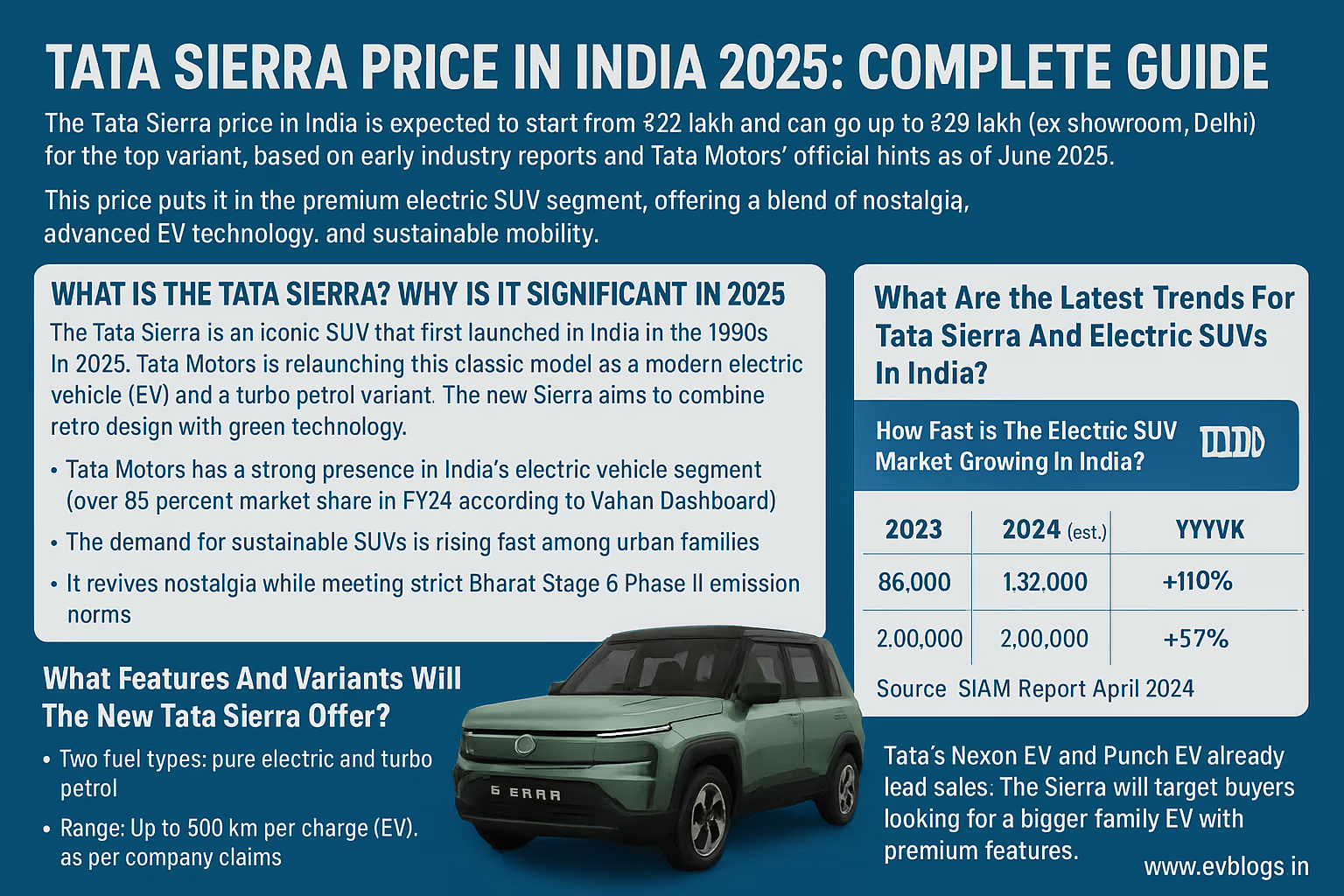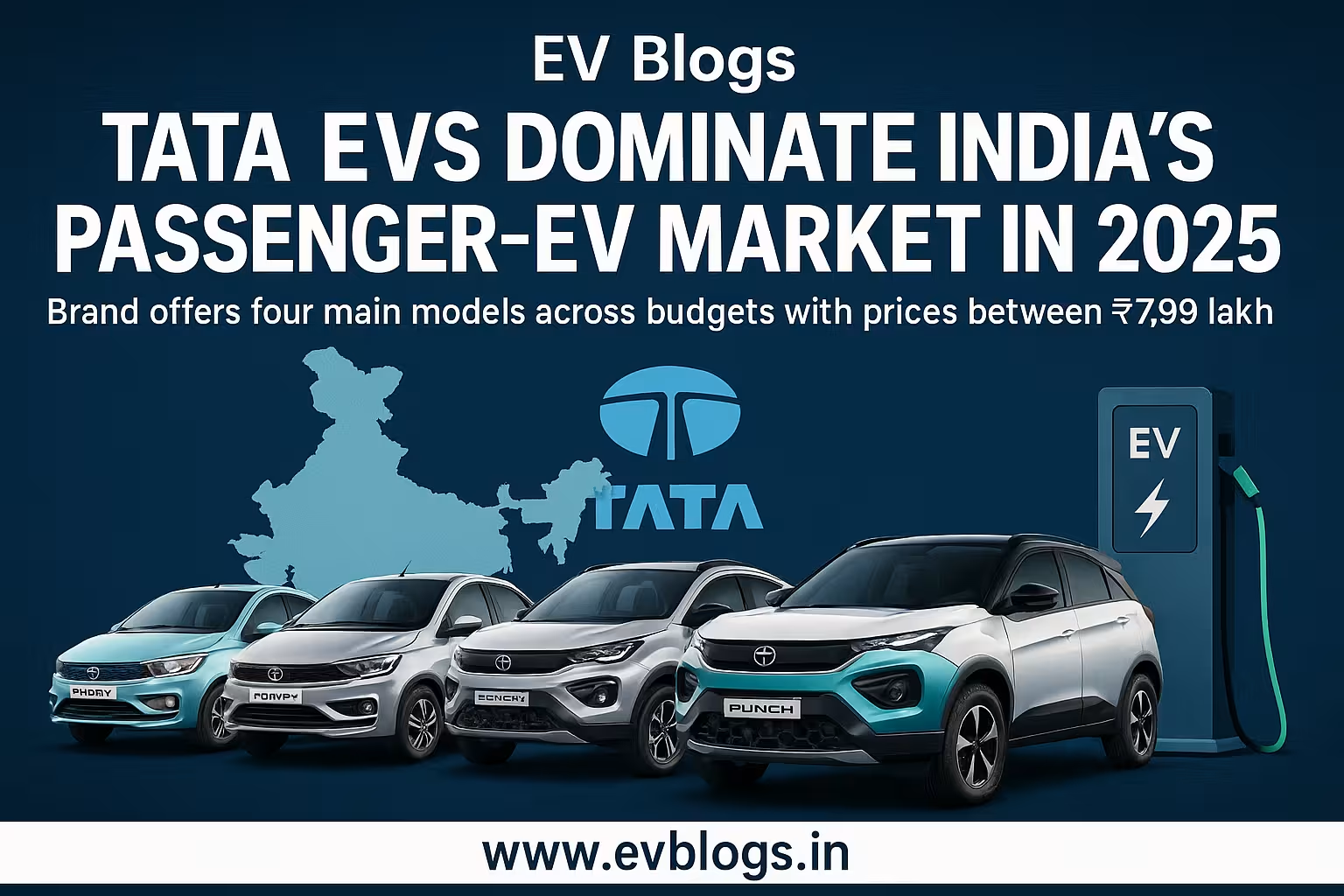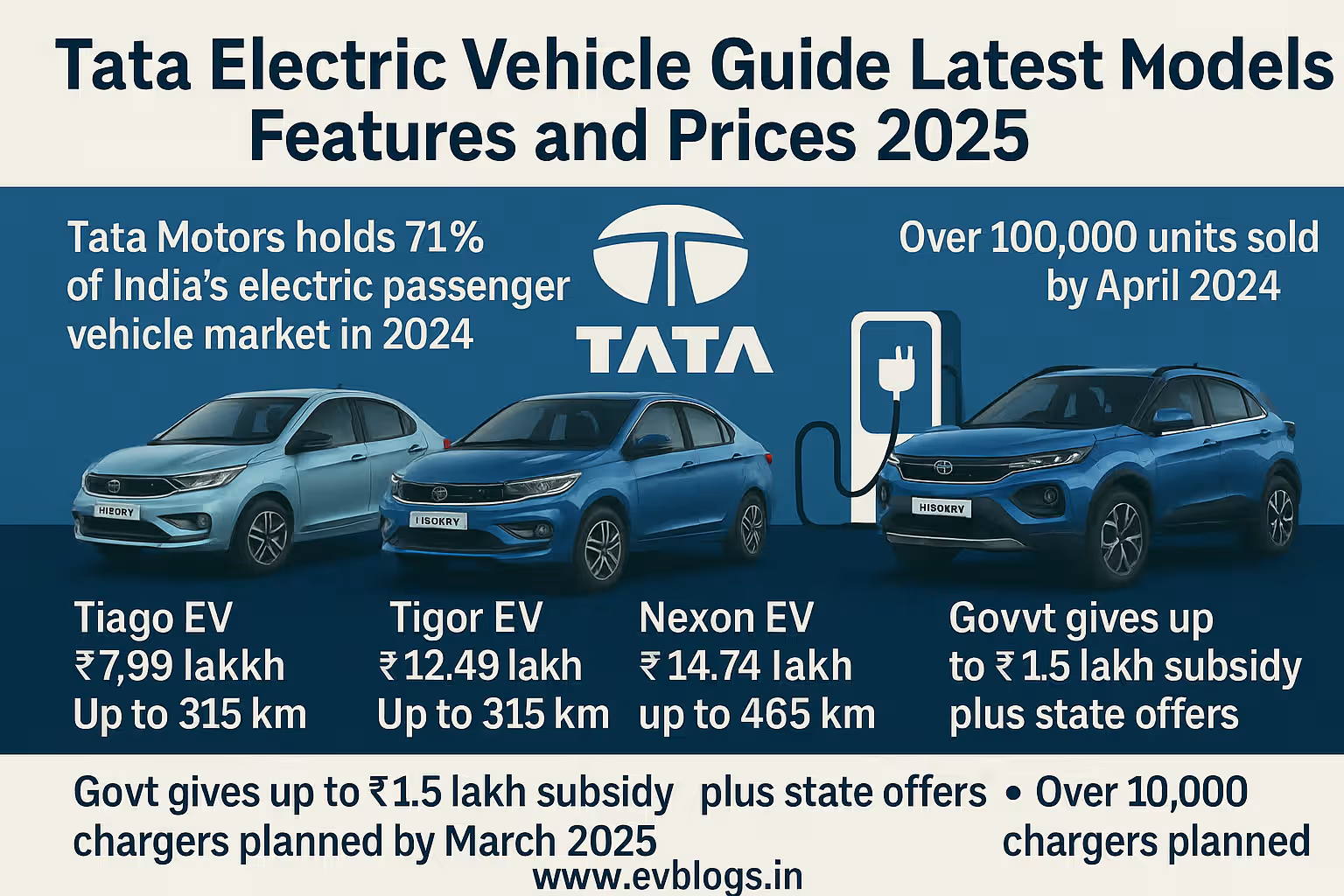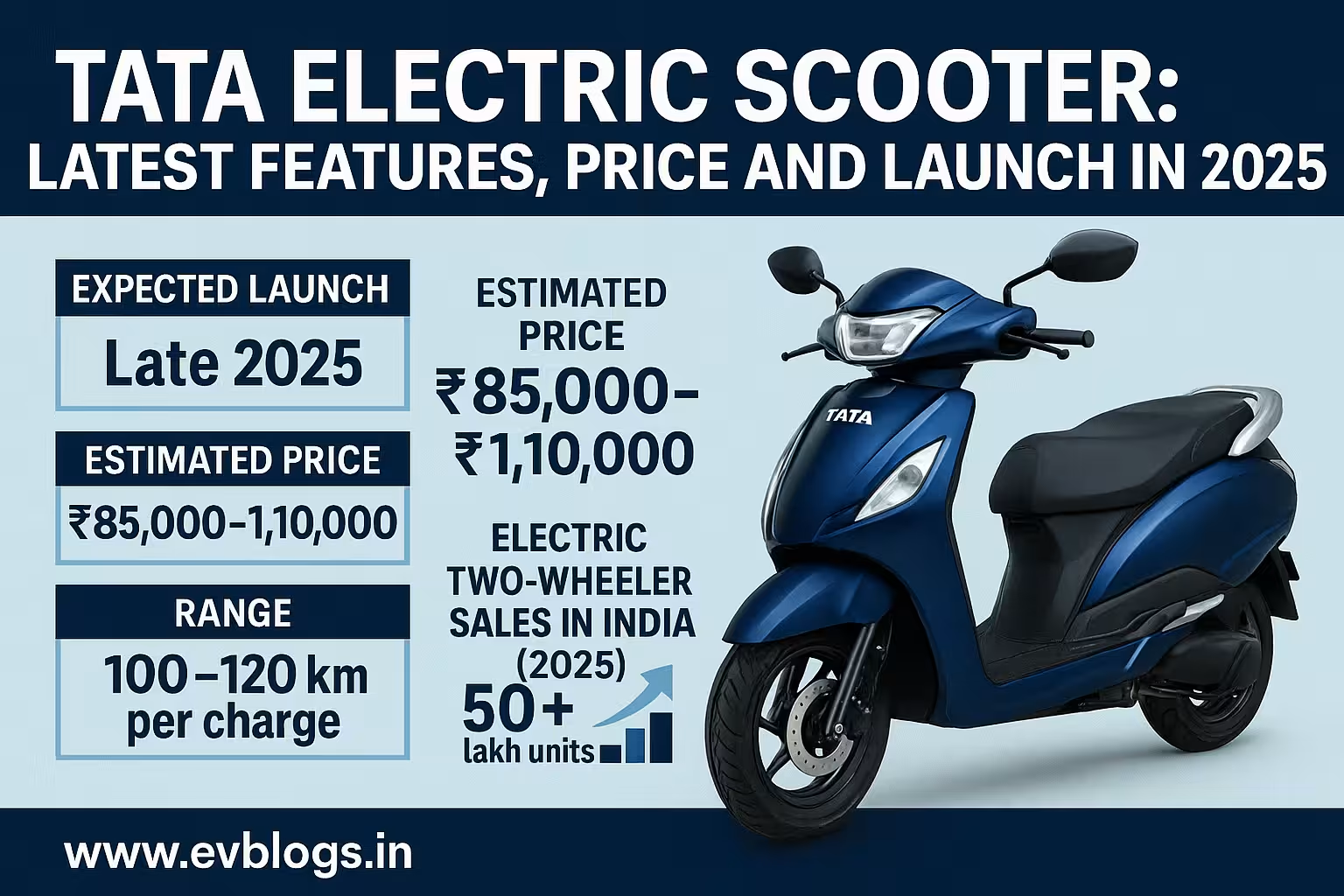Hedhvick Hirav
Hedhvick Hirav is a dedicated EV researcher and editor with over 4 years of experience in India’s growing electric vehicle ecosystem. Their contributions have been recognized in leading sustainability publications and automotive journals.
Summarize & analyze this article with
Choose an AI assistant and open this article directly:
Tip: if the AI doesn’t fetch the page automatically, paste the article URL manually.
How to Prepare Your Home for an Electric Vehicle in India: A Complete Guide
Electric vehicles (EVs) have shifted from a futuristic dream to a practical choice for many Indian households. As the sharp rise in fuel prices, improving infrastructure, and robust government incentives reshape mobility, more Indians are considering plugging in instead of filling up. However, purchasing an EV isn’t just about picking the right model — it’s also about readying your home to support efficient and safe charging.
Whether you live in a standalone house, apartment complex, or gated community, preparing your home for an electric vehicle involves planning, modification, and understanding of technical requirements. In this article, we explain step-by-step how you can make your home EV-ready, highlight key facts, share expert insights, and provide practical tips to ensure a smooth transition.
Introduction: The Growing Case for Home EV Charging in India
India’s electric vehicle market has surged in recent years. According to NITI Aayog and India Energy Storage Alliance (IESA), India’s EV industry is expected to grow at a CAGR of 36% by 2026. Cities like Delhi, Bengaluru, Mumbai, and Hyderabad are already witnessing thousands of new EVs hitting the roads monthly. For most EV owners, the convenience and cost savings of home charging are pivotal.
While public charging stations are expanding, over 80% of EV charging in India still happens at home, according to key industry studies. This real-world reliance makes it essential for potential EV buyers to assess and modify their residential setup — ensuring safety, efficiency, and long-term value.
Understanding the Types of Home Chargers
Before making changes, it’s crucial to know your charging options.
Three Main Types of Home EV Chargers
| Type | Charging Power | Typical Charge Time (0–100%) | Best For |
|---|---|---|---|
| Level 1 (Portable) | 2.3 kW (15A plug) | 10-20 hours | Occasional use/emergencies |
| Level 2 (AC Fast) | 3.3–7.4 kW | 4-8 hours | Daily overnight charging |
| DC Fast Charger | 15kW–30kW+ | 1-2 hours | Not for homes - commercial use |
Most Indian EV owners opt for Level 2 AC fast chargers as they balance speed and safety with reasonable power demands. Nearly all EVs sold in India come with a portable Level 1 charger, but regular use is slow and not recommended for long-term home charging.
Assessing Your Home’s Electrical Capacity
1. Evaluate Existing Supply
Begin by checking your home’s sanctioned electrical load. Most urban homes have a sanctioned load of 3–5 kW (single phase). A Level 2 charger may require upgrading this to at least 7 kW, preferably with a dedicated circuit.
Steps:
- Locate your main distribution board: Check the sanctioned load (usually indicated on your electricity bill).
- Review your current usage: Add up high-wattage appliances like ACs, geysers, and ovens.
- Consult your local DISCOM: Seek advice on increasing sanctioned load and necessary modifications.
2. Analyze Wiring and Earthing
Your EV charging circuit must be:
- On a dedicated, modern copper wire (as per IS 732 standard).
- Properly earthed to avoid electrical faults.
- Protected with a Miniature Circuit Breaker (MCB) and Residual Current Device (RCD/RCCB).
It’s highly recommended to hire a government-licensed electrician for assessment and installation.
Choosing and Installing the Right Home Charger
Selecting Between OEM and Third-Party Chargers
Most automakers offer a compatible home AC charger with the car purchase at a bundled or discounted rate. Leading third-party brands like ABB, Delta, and Tata Power EZ also provide reliable chargers, and some offer installation packages.
Key Features to Look For
- Output Power: 3.3 kW, 7.2 kW options.
- Smart Features: Wi-Fi/Bluetooth connectivity, scheduled charging, remote monitoring.
- Indian Standards Compliance: IS 17017 for EV supply equipment.
- Weatherproofing: For outdoor placement (look for IP54/IP65 ratings).
- Warranty & Support: At least 2 years, local support preferred.
Installation Process: Step-by-Step
- Site Survey: Charger company or certified electrician assesses feasibility, distance from meter, and cable route.
- Load Upgrade (if needed): File application with your local DISCOM to enhance sanctioned load.
- Wiring Setup: Install a dedicated circuit from the main distribution board to the charging spot, preferably using heavy gauge (minimum 2.5 sqmm, preferably 4 sqmm for 7kW).
- Earthing Recheck: Ensure earthing pit is functional and resistance within safe range (<5 ohms ideally).
- Mount & Setup Charger: Secure charger to wall/stand, make all connections, and configure device.
- Testing: Conduct full load test and earth leakage check.
- Documentation: Obtain installation certificate and electrical safety test report.
Installing EV Charging in Different Indian Home Types
In Independent Houses
- Best Option: You have greater freedom for routing wires and placing chargers.
- Tip: Park your vehicle as close as possible to the main DB to reduce cable length (cost and efficiency).
- External Weather Protection: If installing outside, consider a weatherproof enclosure and lock.
In Apartment Complexes
Charging in multi-unit dwellings introduces more complexity. Progressive RWAs and developers are now prioritizing EV charging, especially in metros.
Steps for Apartment Owners:
- Approach your RWA or management with a formal request.
- Present a clear, safety-compliant charging plan, certified by a licensed electrician.
- Seek approval for a dedicated circuit from your own meter (not from common area supply).
- Some apartments now offer shared chargers. Ask about policies or cost-sharing frameworks.
Challenges to Anticipate:
- Limited parking or shared parking spots.
- RWA hesitancy due to perceived electrical loads.
- Need for coordinated infrastructure (future-proof wiring for multiple residents).
In Gated or Builder Communities
Many new projects are now “EV-ready” with preinstalled cables/charging points in parking bays. If yours is not, collaborate with the association to develop an inclusive, scalable plan rather than ad-hoc solutions.
Government Guidelines and Incentives
Central and State Policies
- Ministry of Power 2022 Guidelines: Allow private charging at homes/offices without a commercial license.
- FAME-II Scheme: While mainly covering public charging, some states offer home charger subsidies.
- Delhi EV Policy: Reimburses up to ₹6,000 per charging point for approved chargers.
- Mumbai/Bangalore: DISCOMs facilitate sanctioned load upgrades for EV owners.
Eligibility and Subsidy Process
- Check your state government’s EV cell or website for latest subsidy details.
- Most require:
- Purchase invoice of EV.
- Approved list of compatible chargers.
- Application via local electricity board or municipal portal.
Expert Insights: Navigating Safety and Cost
Key Safety Tips
- Insist on ISI-marked, BIS-certified cables and protective devices.
- Avoid DIY installations or using multi-point extension boards.
- Regularly inspect the charger and earthing — at least annually.
Cost Estimates (2024)
| Component | Approximate Cost (INR) |
|---|---|
| Load upgrade (optional) | 2,000–10,000 |
| Level 2 Charger | 30,000–60,000 |
| Installation (materials & labor) | 5,000–15,000 |
| Weatherproof Enclosure | 2,000–4,000 |
| Annual maintenance (optional check) | 1,000–1,500 |
Tip: Bundled offers from auto brands sometimes lower total setup cost by up to 25%.
Benefits of a Well-Prepared Home Charging Setup
- Cost Efficiency: Night-time home charging rates can be lower than public station rates.
- Convenience: Charge at your own pace; no waiting in queues.
- Battery Health: Consistent charging at recommended rates enhances battery lifespan.
- Energy Tracking: Smart chargers can log consumption for tax/claim purposes.
Practical Use Cases: Stories from Indian EV Owners
Case 1: Mr. Madan, Bangalore
Moved to EV in 2023, initially using the 15A plug. Found it slow and eventually opted for a 7.2kW wallbox with professional earthing. Now charges his Tata Nexon EV from 20% to 100% overnight, and has seen no tripping or bill shocks.
Case 2: Ms. Geetika, Gurgaon Apartment
Faced initial resistance from her RWA. After demonstrating a safety-compliant plan and involving the builder, she secured a personal charging point. Now, others in her complex are following her lead.
Frequently Asked Questions (FAQ)
Q1: Can I just use the charger and cable provided with my EV at home?
A: Most cars come with a portable Level 1 charger (15A plug). While use is allowed, it is slow and not recommended for daily full charging due to heat and long-term wiring stress. A dedicated wall charger installed by a professional is safer and faster.
Q2: Will my electricity bill increase a lot with an EV?
A: Yes, but by a predictable amount. Each full charge costs roughly ₹120–₹250, depending on the car and local rates — typically lower than refueling with petrol or diesel.
Q3: Is it legal to install an EV charger at home in India?
A: Yes. As per Ministry of Power guidelines, private individuals can install EV chargers at residences without a commercial license.
Q4: Do I need to upgrade my electrical connection to install a charger?
A: Possibly. If your home’s sanctioned load is below the charger’s demand (often the case with Level 2), you should apply for a load upgrade from your local DISCOM before installing a powerful charger.
Q5: Can renters/housing society members install home EV chargers?
A: Renters will need landlord/RWA approval. Many societies are updating their policies as EVs become popular — submit a formal request and a technical plan for consideration.
Q6: How safe is home EV charging in Indian conditions?
A: If installed as per standards by a licensed electrician (with proper earthing and surge protection), home EV charging is very safe.
Q7: How much time does the installation process take?
A: Simple installations in independent homes can be completed within a day. In apartments, additional permissions may add several days or weeks.
Q8: Can I use solar power to charge my EV at home?
A: Yes. A rooftop solar system integrated with your home circuit can offset EV charging costs, but make sure your system is sized adequately for the EV’s demand.
Action-Oriented Summary and Takeaway
The future of mobility in India is electric, and preparing your home for an EV is a practical, empowering first step. By thoughtfully upgrading your electrical infrastructure, choosing the right charger, and following safety protocols, you unlock the true convenience and savings of EV ownership.
To prepare your home for an EV in India:
- Assess and, if needed, upgrade your home’s electrical setup with professional help.
- Choose a BIS/ISI-approved wall charger — either through your automaker or a reputed external brand.
- Obtain appropriate approvals (RWA, local DISCOM) where necessary.
- Prioritize safety with dedicated wiring, circuit breakers, and regular maintenance checks.
With these steps, charging your electric vehicle at home becomes an effortless part of your daily routine — clean, cost-effective, and future-ready.
Sources
Ministry of Power, Government of India, Charging Infrastructure for Electric Vehicles – Guidelines and Standards, 2022
https://powermin.gov.in/en/content/charging-infrastructure-electric-vehicles-evs-and-guidelines-and-standardsBureau of Indian Standards, IS 17017 (EV supply equipment standards)
https://www.services.bis.gov.inDelhi Electric Vehicle Policy, Government of NCT of Delhi
https://ev.delhi.gov.in/India Energy Storage Alliance, India EV Market Overview, 2024
https://www.indiaesa.info/Tata Power EZ Charge: Home Charging FAQ
https://www.tatapower.com/ezcharge/NITI Aayog and Rocky Mountain Institute, Accelerating India’s EV Transition
https://niti.gov.in/Bangalore Electricity Supply Company (BESCOM), EV charging FAQs
https://bescom.karnataka.gov.in/Autocar India, How to Set Up a Home EV Charger (2023)
https://www.autocarindia.com/
This article aims to guide Indian households through every step of making their homes EV-ready, offering practical advice and authoritative references to ensure your transition to electric mobility is smooth and empowered.


